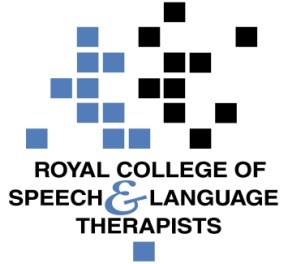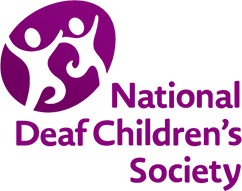Speech and language therapy
Last reviewed: May 2024
All children develop language at their own pace. For deaf children, delays in speech and language are fairly common. Once they have access to language, most deaf children will catch up and be able to communicate with their peers.
If you’re worried about your child’s communication development, or your child’s communication difficulties are impacting their development, learning, or mental health, speech and language therapy could help.
Speech and language therapists (SLTs) don’t just support children to speak. They can also support with all forms of language and communication, including signing or using tools such as a communication board, which may be useful for children with additional needs.
Find out more about choosing a communication approach.
How speech and language therapy can help
Speech and language therapy aims to help children communicate well and develop their speech and language skills. An SLT will work as part of a team with your child’s audiologist, Teacher of the Deaf (ToD), teaching assistants and other professionals.
Speech and language therapists can help with different aspects of communication, including:
- pragmatics (using and understanding language in social situations)
- verbal skills
- non-verbal skills (communicating using gestures, body language or turn-taking)
- expressive skills (getting a message across verbally, through sign language or non-verbally)
- comprehension or receptive skills (understanding spoken or signed language)
- voice skills (controlling volume, quality and pitch)
- speech (pronouncing sounds and words)
- literacy (developing an awareness of letter-sounds and language skills that are specifically related to reading, spelling and to understanding written text).
SLTs can identify if your child has any specific language and communication problems in addition to their deafness. SLTs also support children with eating and drinking, especially if they have difficulties with swallowing.
Many SLTs are employed by the NHS, but some work for education authorities, individual schools, charities or privately.
Some SLTs specialise in deafness. They’ll be experts in:
- spoken language (English or language of the home), sign language and sign bilingualism
- augmentative communication systems such as Cued Speech, Sign Supported English (SSE), Sign Supported Welsh (SSW) or Signed English
- communication strategies that support communication between deaf and hearing people
- typical developmental patterns for deaf babies and children
- deafness and Deaf culture.
Specialist SLTs can be employed by local services and charities. If you’re not sure how to find a specialist, try contacting the Royal College of Speech & Language Therapists (RCSLT). These specialists may help your local therapists to plan therapy programmes for your child or arrange to see your child themselves.
Speech and language assessments
Before they start working with your child, a speech and language therapist (SLT) will assess how your child communicates. They should ask you and the professionals who work with your child for information about how your child communicates in different situations and environments.
If your SLT does not have expertise in deafness, they should talk to you and your ToD to make sure the assessment is accessible and that they’re aware of how deafness impacts communication and language development.
After the assessment, your SLT will put together a report about how your child communicates now and a plan to help their communication develop. As part of the plan, the SLT should consider what you and your child want.
Make sure you ask for a copy of this report and don’t be afraid to ask if you’re not sure what things mean.
You could also ask:
- how your child’s communication and language compares to other children of the same age
- what your child should be working towards
- what other professionals working with your child should do
- how you can support your child’s speech and language development at home.
If your child goes to school or nursery, their SLT should work closely with education professionals to make sure that speech and language therapy targets are built into schoolwork and everyday activities. This will give your child more opportunities to learn and practice.
What to expect from speech and language therapy
Depending on your child’s individual needs, their speech and language therapy plan might include some of the actions listed below.
- Advice and programmes for your child to follow at school or at home.
- A course of intensive speech and language therapy to work on specific targets, carried out by an SLT or a specially trained assistant.
- Group or paired sessions with other children. Group sessions can help children learn to follow a conversation, take turns and take part in discussions with other children. Your SLT should have already taken steps to make sure that your child will be able to understand the contributions of others.
- Courses for parents about communication development and how you can help.
- Support and coaching to help you build targets and strategies into your child’s everyday routines.
- Ongoing speech and language therapy at school, particularly if your child is in a special school or a mainstream school with specialist provision for deaf children.
- Regular reviews at home or school with the SLT to update targets and strategies.
As part of the wider team, your child’s SLT might also:
- support you and your child to make informed decisions about language and communication
- support your child to do their best in education
- work as part of a multidisciplinary team (MDT) to help you make informed decisions about hearing technology
- put you in touch with other useful people, services and organisations, such as ToDs and local support groups.
If your child’s SLT believes that learning sign language will allow them to communicate to their fullest potential, they should advocate for them to have access to sign language.
Find out more about what to expect from speech and language therapy (RCSLT).
Working with your child’s speech and language therapist
When it comes to developing your child’s language and communication skills, the most important person is you. There are lots of things you can do at home to support them.
- Let the speech and language therapist (SLT) know about your child’s likes and dislikes, hobbies and interests. They may be able to include them in the therapy.
- Share important events that may encourage conversation. Let the therapist know about happy and sad events which may affect your child.
- Ask your therapist about your child’s communication and the targets for therapy.
- Get involved in your child’s therapy sessions and ask the therapist for games and activities you can use in everyday life.
- Ask your child’s school to seek advice and training from SLT services. The strategies that have the most impact are often those which are carried out every day as part of your child’s routine.
If your child is aged 0 to 2, check out our tips to support their language and communication.
Our digital booklet 'Supporting the pragmatic and social communication skills of deaf children' explores how children develop pragmatics (the skill of using language socially and being able to adapt it to different situations). On page 47, you can also find fun activities to practise these skills with your child.
Getting speech and language therapy
The way you access speech and language therapy will vary depending on where you live.
We would like to thank the Royal College of Speech and Language Therapists for their contribution to the development of this information.

